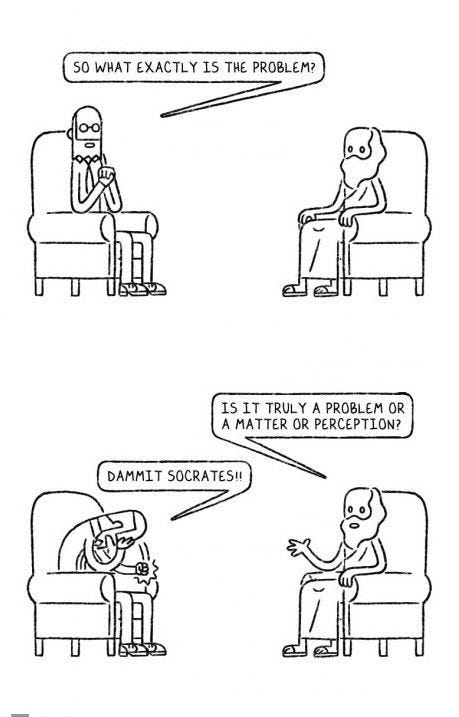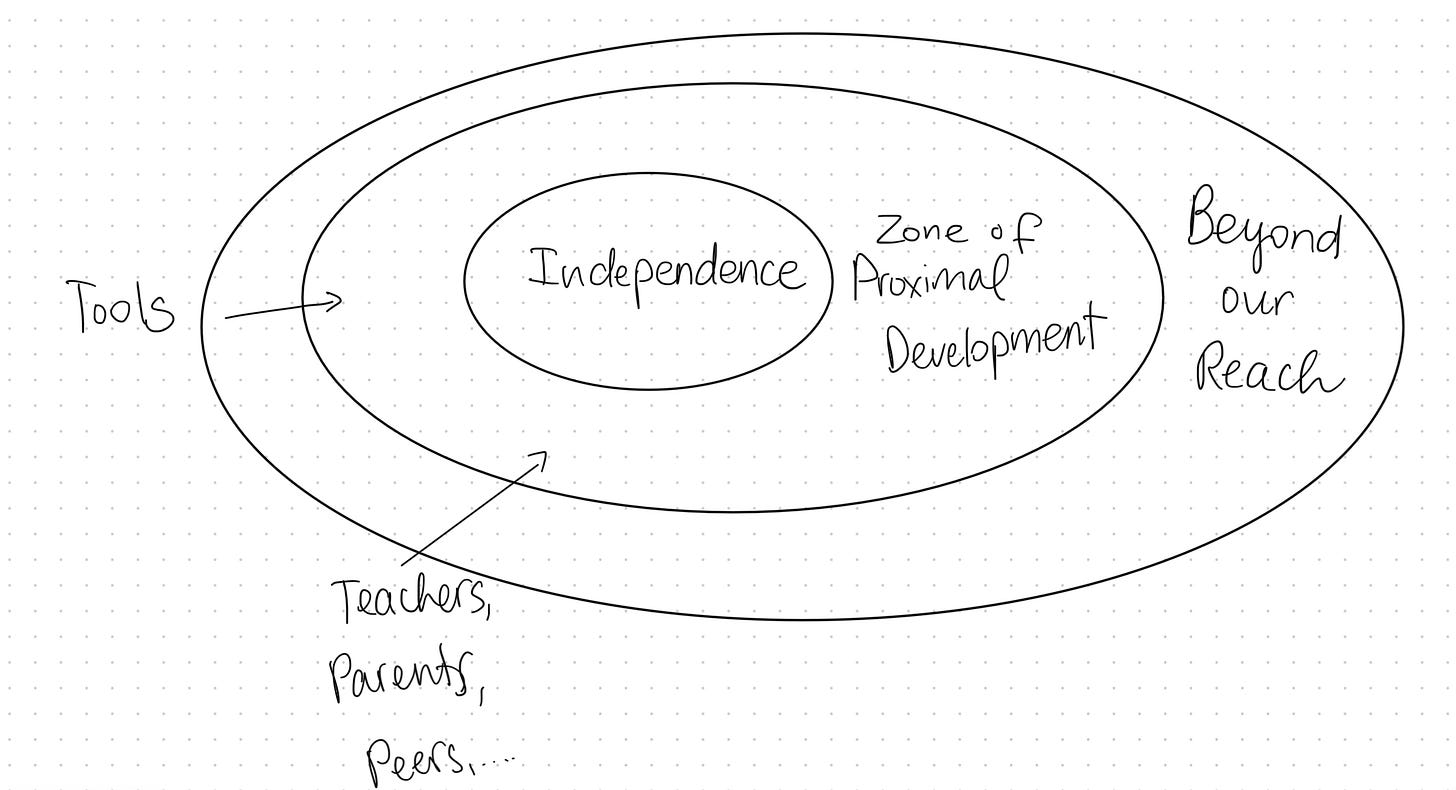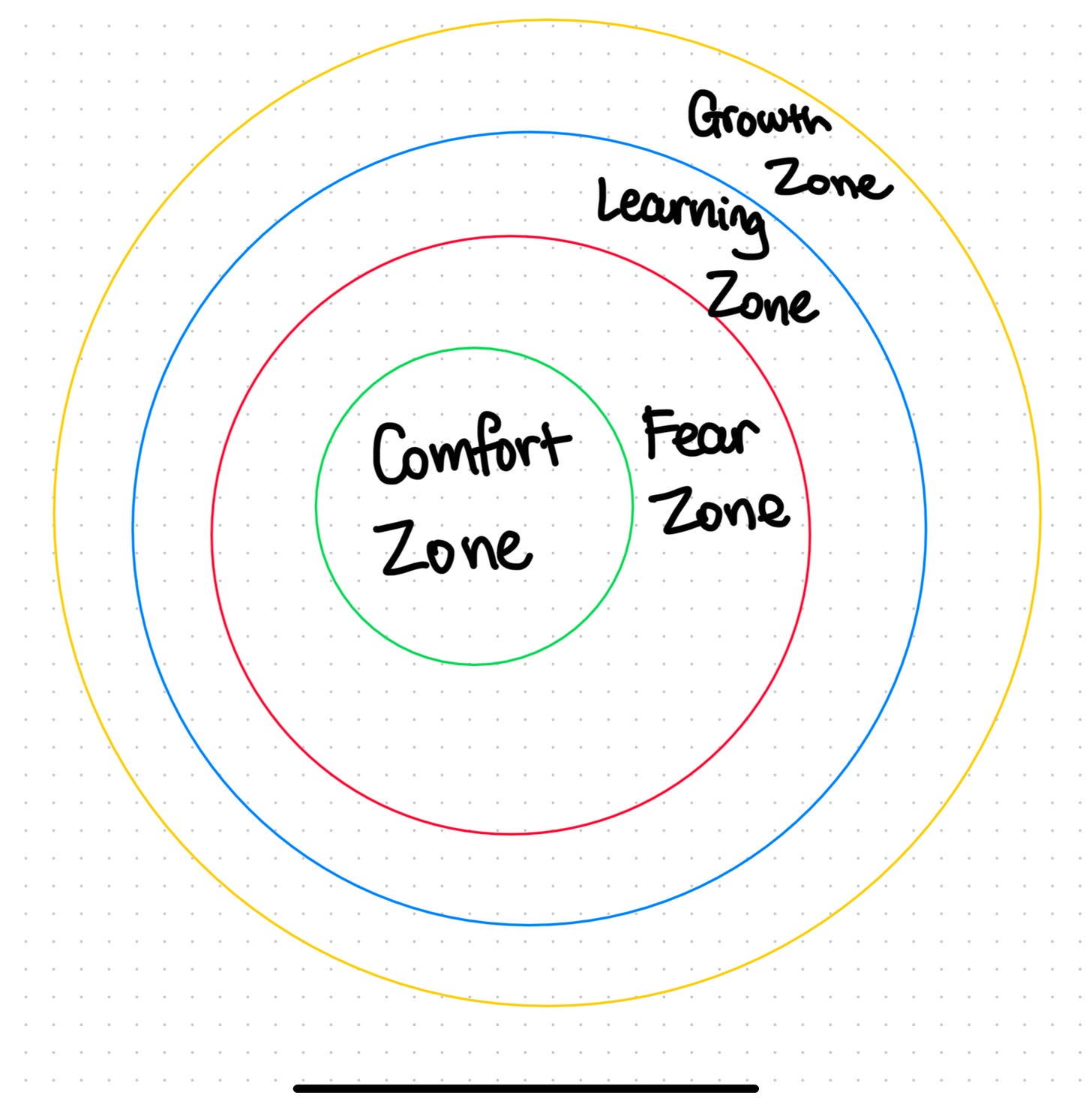Cognitive Development: You Never Walk Alone
To reach the higher functions of your mind
Following up on the previous blog about “cognitivism,” today, I’d love to introduce you to “Vygotsky’s Theory of Cognitive Development in Social Relationships.”
The main reason I pick it is that theory doesn’t look at human’s cognition in a stand-alone point of view but combines cognitivism with the crucial role of the environment/external factors.
A bit of context
I used to have someone tell me this one thing about me.
They told me that I had this tendency to look for anyone’s strengths and push myself to learn from them by always saying, “This aspect of her/him is so cool, which is something I admire them for.”
Well, they aren’t wrong. The thing is, I have always believed that everybody’s identities aren’t original, and who we are is the combination of the people around us. Our family, our friends, or any people we had the chance to meet along the path of life.
But I got curious; is there any explanation behind this thought? That’s why I wrote about this theory while making sure it, at the same time, connects to cognitivism—what I talked about last week.
Base Knowledge: Vygotsky’s Theory of Cognitive Development in Social Relationships
Vygotsky claimed that we are born with four elementary mental functions: attention, sensation, perception, and memory. I believe this theory successfully establishes a structural set of all the cognitive functions, which are deprived of cognitivism.
However, unlike cognitivism, which solely gives a broad and unclear perspective on the development of our mentality, the theory further claims that it is our social and cultural environment that allows us to use these elementary skills to develop and finally gain higher mental functions.
Cultural tools, particularly language, influence the development of higher-order thinking skills. Other tools include writing systems, number systems, mnemonic techniques, works of art, diagrams, maps, and drawings.
Each culture provides its children with tools of intellectual adaptation that allow them to use basic mental functions more effectively.
Tools of intellectual adaptation are methods of thinking and problem-solving that children learn through social interactions with more knowledgeable individuals.
These tools, along with social interaction, contribute to the development of higher mental functions through a process of internalization. I mentioned “internalization” in the last blog a lot.
Unlike elementary functions (like basic attention or memory), higher mental functions are:
Conscious awareness: The individual is aware of these processes.
Voluntary control: They can be deliberately used and controlled.
Mediated: They involve the use of cultural tools or signs (like language).
Social in origin: They develop through social interaction.
The development from basic functions to high ones ideally happens in the zone of proximal development.
First, there is what we can do on our own. Then there is the zone of proximal development, which represents what we can do with the help of an adult, a friend, technology, or what Vygotsky called the "more knowledgeable other." Last, there is what's beyond our reach.
Vygotsky views the zone of proximal development as the area where the most sensitive instruction or guidance should occur, enabling the learner to develop skills they will later use independently, thus fostering higher mental functions.
What caught my attention when researching the theory is that it signifies the reason why, though we can self-learn and be more skilled independently, it won’t be as effective as having the “more knowledge other.” The former turns out to be much more limited.
I always thought I was quite good at self-learning. But the thing is, though I do self-learn, I still learn from someone more knowledgeable than me. Like, watching Youtube to self-learn is not actually self-learning.
Application in Reality: How Can This Theory Help You?
Don’t ever struggle alone doing anything.
To actually grow, don’t hesitate to ask for help from others. I used to feel terribly uncomfortable when asking for someone’s help. But the thing is, to do the unimaginable goals and reach the ideals—what can be out of your reach, there’s always an essential need to have someone get your back.
Below is an image that resonates with me regarding the growth trajectory, in which the fear zone and learning zone can be less scary with the right companion.
Personally, I find this theory gives me a fearless strength to be grateful for others by having them beside me and to be there with someone who’s in need of help.
To be better at anything, be strategic about it.
When you understand how learning works, you can approach challenges with purpose. Vygotsky teaches us to focus on the zone of proximal development—that sweet spot between what you already know and what you can’t yet do on your own.
The trick? Be strategic:
Identify your ZPD for any skill or task. What’s just beyond your reach right now?
Find the right support—your MKO. Whether it’s an expert, a study buddy, or a tool like an app, lean on them to guide you through this zone.
Plan how you’ll internalize what you learn so you can apply it independently later.
The fact I’m writing this down is actually a strategic step that I’m taking to learn about my topics of interest on a deeper level.
What’s beyond my reach: Understanding social learning to the extent that I can apply it to my learning habits.
MKO: Youtube videos and relevant reading materials. Substack platform where you, subscribers, are.
Internalization: Writing about Vygotsky’s theory while reflecting on my conversation with someone.
Conclusion
You never walk alone.
Thank you for reading! 🙏




